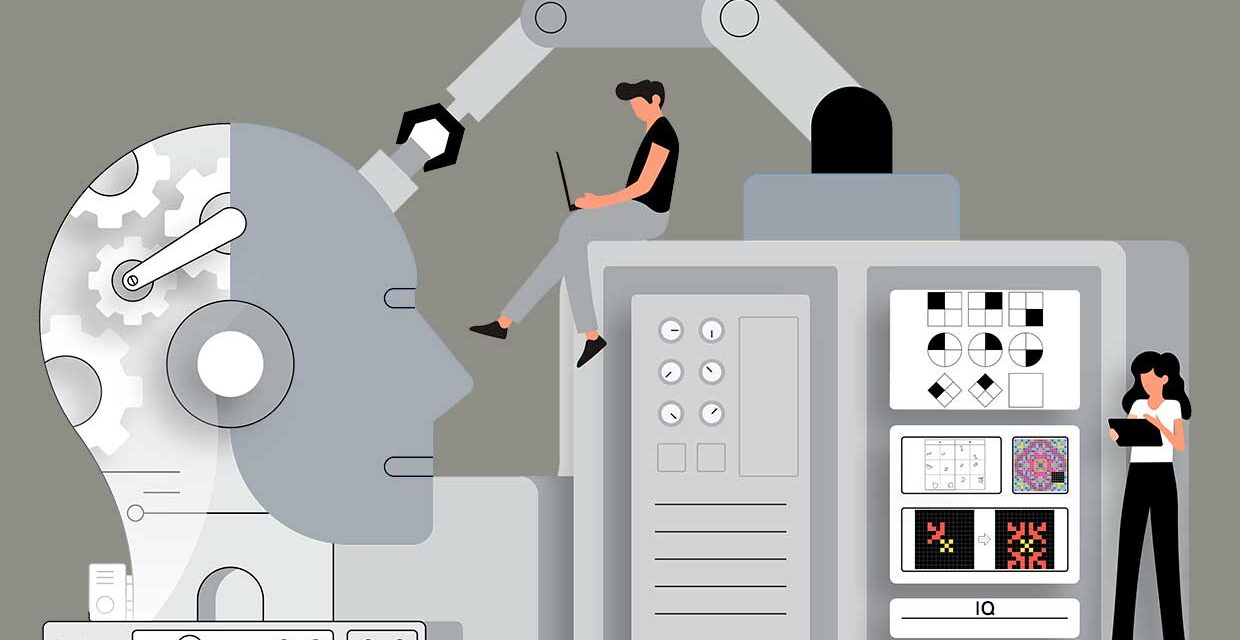
How Technology is Improving IQ Testing?

In the past, the only way to test your IQ was to wait for the organizations to come near you and schedule testing, or to travel to another city to do the same. Sometimes people needed to take the tests in person with psychologists, so they can estimate their intellectual abilities.
Surely, things are much easier now in 2024, when we have everything we need available just a few clicks from us.
There are also many different tests available, which we can find online. Sometimes they are combined with sensory stimulations, so we can get a complete image of the IQ, behavioral and cognitive skills, and emotional intelligence if needed. You can try it yourself and see how it goes on iq-global-test.com.
Today’s IQ tests are focused on the intellectual approach to resolving given issues. But in advanced testing, there is usually a need to monitor the way the brain works while resolving some of the given problems. That’s one of the main ways technology affects and improves modern IQ testing.
Table of Contents
1. Brain-computer interfaces (BCI)
Brain-computer interface (BCI) devices allow users to control external devices using brain activity. BCIs have been around since the 1960s, however, their use has increased in recent years due to technological advancements. In 2014, scientists at Duke University announced that they had developed a technique that allowed people who were paralyzed below the neck to use their minds to move robotic limbs with the help of a computer. As of 2016, the National Institutes of Health estimates that over 1 million Americans suffer from some degree of paralysis.
2. EEG

Source: hopkinsmedicine.org
Electroencephalography (EEG) is a noninvasive test that uses electrodes placed on the scalp to record electrical signals produced by neurons in the brain. EEG is often used to diagnose epilepsy disorders. However, in recent years, researchers have begun to explore its potential applications beyond diagnostics. For example, it could be used to create a type of artificial sensory feedback for individuals with motor disabilities.
3. MEG
Magnetoencephalography (MEG), sometimes called “brain magnetometry”, is similar to functional magnetic resonance imaging (fMRI). However, instead of mapping blood flow, MEG maps the electric currents flowing in the brain. Scientists believe that MEG may be able to detect changes in neural activity before they become evident in fMRI scans.
4. Brain stimulation
As we mentioned earlier, brain-computer interfaces use brain activity to interact with the outside world. A different type of brain-computer interface involves the direct electrical stimulation of the brain. While these techniques have only recently gained popularity, they hold tremendous promise in helping those suffering from neurological disorders.
5. Neuroimaging
Neuroimaging includes many types of tests, including MRI, PET, SPECT, and others. These tests map various aspects of the human body, from blood flow to glucose levels, etc. Researchers are currently working on developing these technologies further to provide information about the brain while simultaneously being minimally invasive.
6. Optical Imaging

Source: youtube.com
Optical imaging is a relatively new area of research in neuroscience that involves analyzing light waves. Scientists are exploring the possibility of using optical methods to understand how the brain works. One promising application is to analyze brain activity based on the way photons scatter off of cells.
7. Functional connectivity
Functional connectivity refers to the way two or more parts of the brain communicate with each other. Modern neuroimaging tools allow us to measure how regions of the brain work together, even while the person under investigation is performing a task.
As you can see, most of these technologies are used in medicine, but they can be a nice addition to IQ testing, especially when working with specific cases, like genius children, or even in autism specter cases.
Sometimes doctors and psychologists must get deeper into a patient’s or client’s brain, so they can understand the other issues happening with them.
Also, we can focus on another important aspect, that is not mentioned in medical IQ approaches:
The availability of tests online
As we said at the beginning of the article, these tests weren’t really accessible in the past. We needed to travel to another town to get tested, or visit clinics and pay money for it.
Today we have real and relevant tests available online and IQ testing has never been more accessible to us. We can also find tests to obtain certain certifications if this is required of us for a position.

Source: iq-global-test.com
We would like to emphasize that if there is a need for a brain scan while solving the test, then it cannot be performed online.
So, we come to the conclusion that one of the greatest benefits of IQ tests and technology is that they are finally available online for everyone, so we can focus completely, without panic, and get real results.
Interesting facts about IQ tests
At the very end of this article, we decided to provide some interesting facts, instead of the usual conclusion, so stay with us to see more:
– IQ is a measure of general intelligence, not specifically academic intelligence.
– A person’s IQ score is based upon their performance on test items.
– There are many different types of IQ tests, including verbal, nonverbal, performance, and full scale (that’s why brain scanning options are used).
– IQ scores tend to remain relatively constant throughout adulthood.
– IQ tests cannot predict what a person might become in the future.
– IQ has little to do with personality traits.
– No single factor explains how someone became intelligent.
– IQ tests are only useful if they accurately reflect what a person knows about a particular subject area.
We hope that you had fun learning about how technology improves brain and IQ testing, and what is intelligence in general.

Source: cambridge-news.co.uk
As you suppose, many people find it the same as being smart or good at school or work. But, as you can see, those things are quite different. Also, technology opens so many options to explore why some people perform better than others, and how to help the below-the-average people survive “in the wild.”
We hope that reading this article was equally interesting as writing it.

























